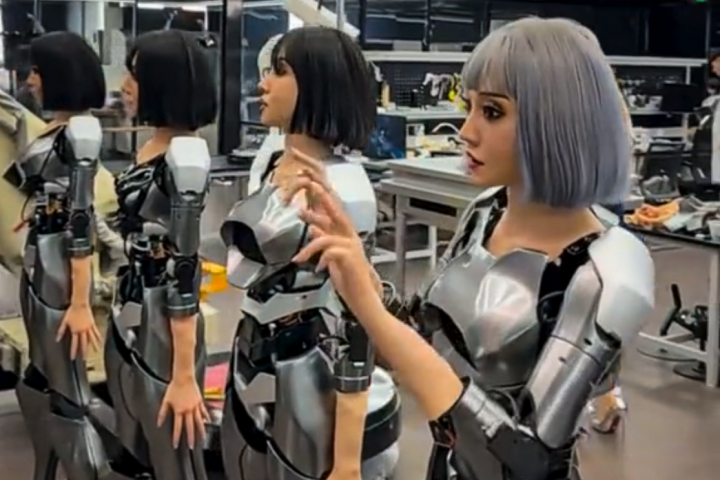What if it were just as easy to edit a pre-recorded voice as it is to manipulate a photo? Adobe's experimental Project VoCo is poised to do just that. This technology was demoed at the annual Adobe MAX conference last week alongside sneak previews of other exploratory software.
VoCo, also known as "Photoshopping Voiceovers," was demoed by Adobe engineer Zeyu Jin. Just as Photoshop can convincingly add and edit elements of a photo, VoCo can make instant edits and additions to recorded speech – in a way that mimics the original speaker almost perfectly.
According to Jin, the software needs about 20 minutes of voice recording to learn the speech patterns and wave forms of the original speaker's voice. Then, the user can simply type in the edited version of the text and hear the desired changes played back practically instantly. In the demo, Jin playfully altered a sentence, "I kissed my dogs and my wife" to "I kissed Jordan three times." New words that were not in the original recording were re-created in the speaker's tone and timbre.
While this technology has obvious applications in the entertainment and voiceover industries, it could have long-reaching societal repercussions as well. Just as Photoshopping allegations come into play when the veracity of an image is suspect, VoCo could open voice recordings to the same kind of scrutiny. To counter security concerns, Jin said that features like watermarking and anti-forgery measures are on the way.
Other notable Adobe "sneaks" include Project Stylit and CloverVR. The former is a tool for creating digital art with traditional fine art looks. The latter tackles a more-cutting edge issue, introducing new methods for editing 360-degree videos for virtual reality applications.
Project Stylit creates shortcuts for producing digital art that looks hand-drawn or painted. But unlike the stock filters and effects that already exist, Stylit customizes the effects based on your personal artistic techniques, which could help you look like a better illustrator (or painter, or sculptor) than you are off-screen.

In the demo, Stylit was used to apply a hand-colored effect to a dinosaur model in real-time. While oil pastels were used to draw a ball off-screen, Stylit picked up the style of the ball being drawn and applied it to the dinosaur. The result was a digital rendering of a dinosaur that appeared to be hand-drawn with oil pastels, in the style of the ball drawing. The demo promised immense versatility, with the ability to use and apply many different media effects to the digital end product.
Lastly, CloverVR addresses the need for consumer 360-degree video editing software. The present VR editing experience involves third-party plugins and inefficient workflows, which includes constantly putting on and removing VR headsets. CloverVR introduces tools for direct editing from within VR, letting you leave the headset on and make changes as you see them.
These projects are just notable highlights from the 11 "sneaks" that were demoed at the conference. These experimental technologies may or may not make it into future Adobe products and services, but they do offer a fascinating look behind the curtain of an industry leader.
You can watch Adobe's full demo of VoCo below.
Source: Adobe






